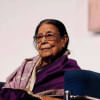Remembering Satyajit Ray through his revolutionary female characters

Satyajit Ray, a master filmmaker whose work captured the essence of Indian society with great sensitivity and insight. On his 31st death anniversary, we look back at his films, which featured strong female characters who were integral to the stories he told. Ray's portrayal of women in his films was groundbreaking and challenged the traditional roles assigned to women in Indian cinema.
One of Ray's most iconic films, "Charulata", features one of his most memorable female characters. Charulata, played by Madhabi Mukherjee, is a bored and lonely housewife who finds solace in literature and writing. Through her relationship with her brother-in-law, Amal, Charulata discovers a new passion for life and becomes more independent. The film depicts her struggle to break free from the restrictions of her society and assert her own identity.

Ray's portrayal of women in his films was not limited to his female characters' on-screen presence. He also worked closely with women behind the scenes, such as his wife, Bijoya Ray, who was his constant collaborator and partner. Bijoya Ray played an instrumental role in shaping many of Ray's films, including "Charulata" and "Ashani Sanket."
Another notable female character in Ray's films is Arati, played by Madhabi Mukherjee in "Mahanagar". Arati is a middle-class housewife who takes a job to help support her family. The film depicts her journey from a timid, submissive woman to a confident and empowered individual. Arati's story is a powerful commentary on the changing role of women in Indian society during the 1960s.
Ray's film "Devi" explores the theme of women's oppression in Indian society. The film tells the story of a young girl who is believed to be an incarnation of the goddess Kali. She is worshipped and revered by her family and the community, but her divine status soon becomes a burden. The film highlights the exploitation of women in traditional Indian society and the dangers of blind faith.

In "Ghare-Baire", Ray explored the themes of nationalism and the role of women in India's struggle for independence. The film's protagonist, Bimala, played by Swatilekha Sengupta, is torn between her loyalty to her husband and her attraction to a revolutionary leader. Bimala's journey in the film highlights the challenges that women faced during India's struggle for independence and their often-complicated relationships with men who were fighting for the cause.
Ray's film "Ashani Sanket" is set during the Bengal Famine of 1943 and focuses on the plight of the poor in rural Bengal. The film's protagonist, Gangacharan, played by Soumitra Chatterjee, is a teacher who witnesses the suffering of the people in his village. The film highlights the impact of the famine on women and their struggle to survive during this challenging time.

Ray's films also challenged the notion of the "ideal" Indian woman, who was expected to be submissive, obedient, and self-sacrificing. In his film, "Nayak", the character played by Sharmila Tagore breaks away from the typical portrayal of women in Indian cinema. She is a successful, independent journalist who is not afraid to assert herself and speak her mind.
Satyajit Ray's portrayal of women in his films was revolutionary and had a lasting impact on Indian cinema. His female characters were complex, nuanced, and multifaceted, and they added depth to his films' stories. Ray's contribution to Indian cinema was immense, and his legacy lives on, inspiring future generations of filmmakers to continue to explore the complexities of gender roles and societal issues in their work.

 For all latest news, follow The Daily Star's Google News channel.
For all latest news, follow The Daily Star's Google News channel. 









Comments